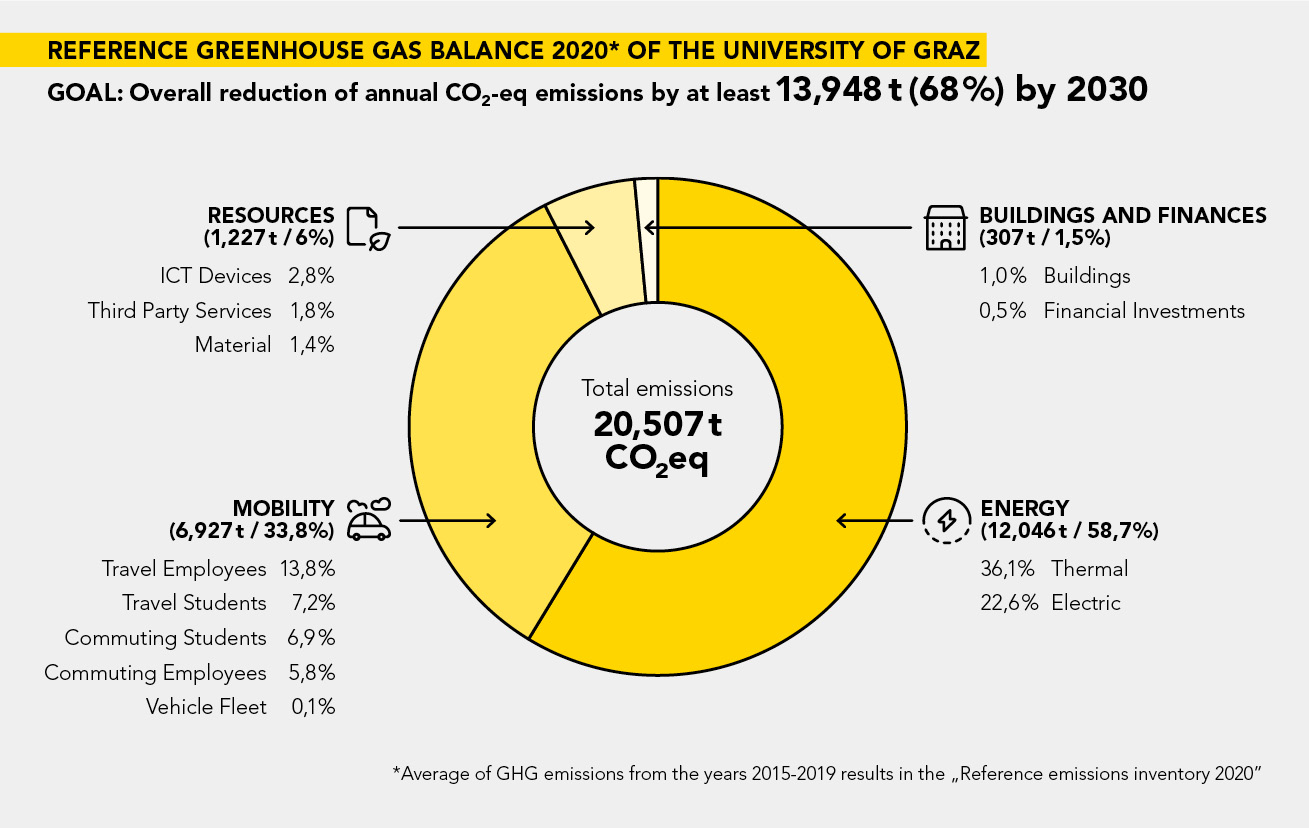Greenhouse gas emissions inventory of the University of Graz
The emissions of the University of Graz are to be successively reduced by 2030. The calculation of a reference emissions inventory is the first step in the Carbon Management process to implement targeted measures. This greenhouse gas balance represents the baseline of the roadmap to a climate-neutral University of Graz and is calculated from the average emissions of the years 2015 to 2019. The emissions can be categorized into the following categories: energy, mobility, resources, buildings and finance. In addition, nature-based carbon storage contributes to the removal of greenhouse gases from the atmosphere.

